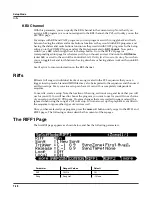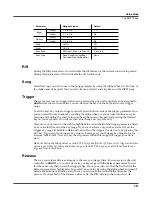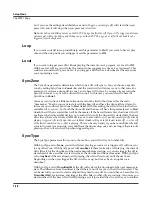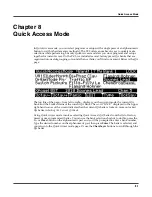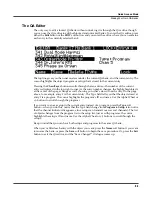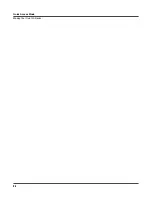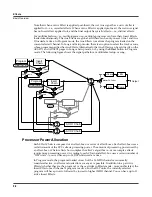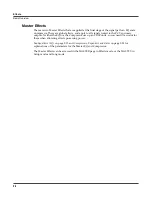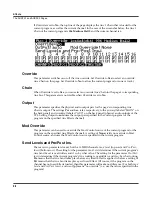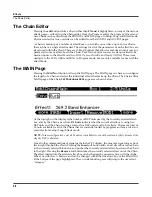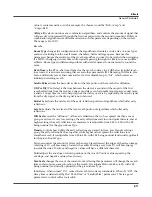
Effects
Basic Overview
9-1
Chapter 9
Effects
The PC3 boasts a powerful effects processor that puts the power of an entire studio at your
fingertips. This chapter contains everything you’ll need to know to use the PC3’s effects and
Chain Editor to their fullest potentials.
This chapter begins with a few preliminary descriptions of basic routing concepts and effects
terminology. The section that follows contains a more in-depth description of the workings of
the PC3 effects processor, and instructions on how to configure the Effects mode pages. After
that is a brief overview of using effects in Program mode. The penultimate and last sections
contain instructions on how edit and create your own Chains, and a comprehensive glossary of
the effects parameters you’ll encounter in the Chain Editor.
Basic Overview
This section gives a general, “big-picture” overview of the effects routing in the PC3, as well as
descriptions of the fundamental concepts of effects stages and routing, effects allocation, Aux
overriding, and master effects.
Effects Stages and Routing
There are three type of effects that are applied during different stages in a program’s signal path:
Insert Effects, Auxiliary (Aux) Effects, and the global master EQ/compressor. Insert Effects are
placed directly in the signal path at the output of a program—as described in the Program mode
chapter, these Insert Effects can apply to either the whole program or only to selected layers
within the program. Each program also has two stereo Aux Sends that go to the Aux 1 and Aux
2 Effects, both of which can be set to be applied either pre- or post-Insert Effect. The master EQ/
compressor are applied globally to the signal at the main outputs.
The object used for Insert and Aux Effects is referred to as a “Chain.” A Chain is in turn a
sequence of effect-boxes cascaded in series, or is a single effect-box. Each program can have one
main Insert Chain and up to two Aux Chains. Also, individual layers within a program can have
their own Insert Chain that will be used instead of the program’s main Insert Chain. You can
select from the same set of Chains to use for both Aux and Insert Effects. The following figure
shows the signal path for a program that does not use layer-specific effects:
Comp EQ
AUX 2 Chain
Insert
Program
AUX 1 Chain
Pre
Post
Send Levels
∑
∑
∑
∑
EQ Comp
Output
Chain
Master FX Order
Summary of Contents for PC3
Page 24: ...1 6 Introduction Options ...
Page 50: ...4 4 The Operating Modes Using the Modes ...
Page 174: ...7 54 Setup Mode The Utility Soft Buttons ...
Page 178: ...8 4 Quick Access Mode Making Your Own QA Banks ...
Page 204: ...9 26 Effects Mono Algorithms ...
Page 266: ...A 2 MIDI Implementation Chart ...
Page 308: ...Index x ...


